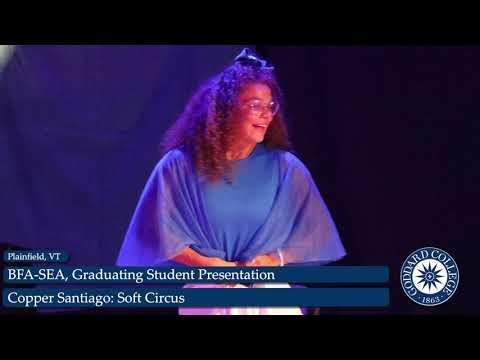
A conversation with Goddard alum Hartman Deetz
In the end of March, Secretary David Bernhardt of the Department of the Interior ordered the Bureau of Indian Affairs to take the Mashpee Wampanoag’s 321-acre reservation out of trust. This removed it from the federal reservation system. This federal action uses a legal loophole, arguing that the Mashpee Wampanoag should not have rights to a reservation through the 1934 Indian Reorganization Act because they were not a federally recognized tribe at the time the law was passed.
It is 400 years after the highly mythologized “first Thanksgiving,” when the Wampanoag offered mutual aid to the Pilgrims. The Trump administration is again stealing Wampanoag land. Moreover, they are taking advantage of a global pandemic to push their agenda forward in a time when acts of public protest are illegal and the need for federal medical relief can be leveraged as a tool of control and manipulation.
The Mashpee Wampanoag
Though they have lived the Mashpee area for thousands of years, the Mashpee Wampanoag were only federally recognized as a tribe in 2007. The Bureau of Indian Affairs took the reservation lands in Mashpee and Staunton into trust in 2015. Hartman Deetz, a member of the Mashpee Wampanoag, who graduated from Goddard’s Individualized BA program in 2016, describes federal recognition as the conclusion of a decades-long struggle that began with a land suit in 1970.
Getting federal recognition had a huge impact on the tribe in terms of our sense of being able to achieve something for ourselves and to maintain our existence as Mashpee Wampanoag in Mashpee itself, next to Mashpee Pond, next to Mashpee River, which are both a huge part of our identity and community. It was a huge source of elation.

Deetz lived away from the Mashpee area from age two to age twelve, and clearly remembers the experience of returning to an ancestral homeland:
My father and I were driving on Great Hay Road. At the time it was just a narrow dirt road, the kind where if you drive a pickup truck down the middle, branches scrape the doors on both sides.
My father asked, “how old do you think this road is?” I said 100 years? 200? He said “Nope. It’s older than America.” So I could literally stand in the footprints of my ancestors, on a road made by people walking back and forth between the pond and the bay. It presented me with something that I felt like I was missing in my life overall. I have a literal physical connection to this dirt, to this soil. It contains, it is made of the presence of my ancestors in the flesh. Their feet made the roads and their blood and bones are in the soil. It’s a connection like nothing else I’ve felt or experienced anywhere else. It is quite literally a part of me and I’m a part of it. Having spent years without that connection, to find it was overwhelming.
The impacts of reservation status
When the land was taken into federal trust as a reservation in 2015, it was less a celebratory than federal recognition. Hartman described it as “a step in the process: you fill out forms, dot the I’s, cross the T’s; it’s part of business of operating as a tribe.” It was an incredibly important part of the process, though. It doesn’t only exempt the land from taxation and make it possible to have a casino. Many of the grants from the Association of Native Americans (ANA), including the grants that fund the Wômpanâak Language Reclamation Project, are only available to tribes servicing a reservation population.
This move by the Department of the Interior to take the Mashpee Wampanoag land out of trust will mean that even with the exact same students and teachers in the same classrooms, the language reclamation project will not be eligible for the funding it relies on. Also, land that was not taxable will now be taxed. Without a major economic engine the tribe will not be able to hold that land. The casino that the tribe had been planning as a means to generate economic security for the Wampanoag will not go forward.

A larger anti-sovereignty agenda
Hartman points out that there even more at stake here than these urgent concerns for the Wampanoag people. This precedent-setting interpretation of the 1934 Indian Reorganization Act is part of a larger agenda to seize reservation land across the country:
What a lot of folks haven’t touched on is the larger agenda. We’re first on the chopping block, but if they set precedents in this case, this will impact so many other tribes.
It’s being covered as a local issue, but it is part of a larger well-funded national agenda. CERA, for example, is a national group behind the idea of eliminating the federal trust system for native land. They’re trying to say that Indian people should be free to develop their own economies and the federal government is standing in the way, but this is largely an effort of the extractive industries.
We might just be the case that they feel is the most vulnerable, the low hanging fruit. A lot of the folks looking at this are looking at the history of our particular case, but aren’t looking at it as a larger attack against Native American sovereignty.
As the Washington Post reported last May, Twin River Casino in Rhode Island has hired Matthew Schlapp, chairman of the American Conservative Union and husband of Donald Trump’s director of strategic communications, as a lobbyist advocating against the Mashpee Tribe. This recent decision of the Trump administration is consistent with attacks on native sovereignty that Trump has made throughout his career in real estate and his presidency.
Legal and legislative responses
The Mashpee Wampanoag are appealing the Department of the Interior’s decision. They have also filed a lawsuit in U.S. District Court against the Department of the Interior’s reversal of its own decision. At the same time, members of the House are urging the Senate to act on two bills. H.R. 312, The Mashpee Wampanoag Tribe Reservation Reaffirmation Act, protects the Mashpee from exactly this type of action. H.R. 375 applies the protections of the 1934 Indian Reorganization Act to tribes which have been federally recognized since 1934. Both of these bills passed the House last May and have not been acted upon by the Senate. There is an online petition to pressure the Senate to take this up. The Native American advocacy organization Heron-Hill LLC has written a form letter that people can send to their representatives.
Acting as allies and witnesses
There are a number of additional ways to support the Mashpee Wampanoag right now. You can donate to the tribe itself to support the legal battles ahead, or donate directly to the Wômpanâak Language Reclamation Project, which is at risk of losing essential funding. This impressive language program, led by Jessie “little doe” Baird is the first American Indian language program to reclaim a language with no living speakers. (There is a great interview with Jessie “little doe” Baird here.) Tia Pocknett, a current student at Goddard College teaches in this school.
Also, you can donate to the Native Land Conservancy. Founded in 2012, this is a 501c3 land conservancy run by members of the Mashpee Wampanoag. As a conservation trust, it outside of the federal reservation system. This is a way that the Mashpee Wampanoag are maintaining stewardship of natural habitats and ancestral village sites regardless of the outcomes of the current legal battle.
Hartman also reminds us: “This pandemic won’t last forever. Keep your ears open for when it is possible for us to come together again. Remember how vicious the timing was.”
Goddard College invites every student to engage with the world in a way that promotes justice and equity. Enroll at Goddard College and get personal advising from trusted faculty and a community of self-motivated learners at Get Info







